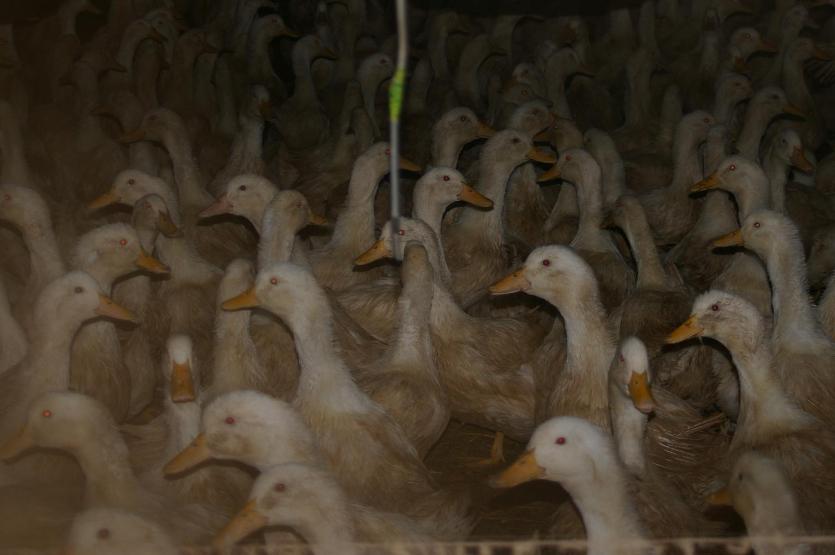 Correspondence information about the author Guiomar Liste
Correspondence information about the author Guiomar ListeOpen water provision increases welfare in duck stalls
A literature search by Wageningen UR Livestock Research has shown that the welfare of ducks can be further increased by offering open water in duck stalls
Dutch Pekin ducks are restricted in their natural behaviour by the lack of such water. This is because Pekin ducks have a strong need for open water, even in a straw system that already largely provides for their ‘bill care needs’. Merely providing water through drinking valves does not sufficiently stimulate their natural behaviour. The research was carried out with a subsidy from the Product Board for Poultry and Eggs (PPE).
Water provision by means of drinking valves is hygienic and more than sufficient to meet the ducks’ drinking water needs, but is apparently insufficient for proper care of their bodies, and possibly also for the cleaning of eyes and nostrils. Open water facilities such as drinking basins, drinking troughs, showers and shallow baths do enable the ducks to look after their bodies properly. Swimming water – i.e. the ability to float fully – is not required for this. There is a need to develop a water system suitable for the way in which a duck grooms and cleans itself and drinks, but which is not associated with greater risks for animal health, the environment (ammonia, odour and particulate emissions) and the quality of the end product, and which has a minimum impact on manure quality. In other words, open water in the stall must not lead to contamination of the stall, and the water itself must remain clean enough that no hygiene problems arise. Developing this kind of water provision demands an integrated approach.
Improving duck welfare
The duck sector feels responsible for the welfare of ducks and wants to take their natural needs into account as much as possible. For this reason, it has asked Wageningen UR Livestock Research to conduct a literature search to look into which welfare improvements are possible in duck farming. In the Netherlands, ducks are kept in stalls with straw. Although the Council of Europe recommends providing ducks with open water, no European or national statutory requirements to this effect currently apply.
Report 436 ‘Natural behaviour and needs of Pekin ducks; from theory to practice’ by M.M. van Krimpen and M.A.W. may be downloaded free.
Why farmed ducks endure worse conditions than battery hens
http://www.independent.co.uk/environment/why-farmed-ducks-endure-worse-conditions-than-battery-hens-8595956.html
Bird Flu:A Disease of the Intensive Poultry Industry
